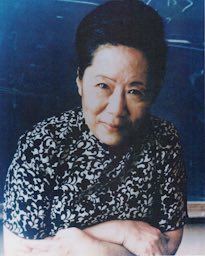Dr. Chien-Shiung Wu, a pioneering physicist, radically altered modern physical theory and changed our accepted view of the structure of the universe.
Born and educated in China, Wu received her bachelor’s degree in physics from National Central University in 1934. In 1936, she moved to the United States, where she pursued a doctorate in physics from the University of California, Berkeley (1940). Dr. Wu taught briefly at Smith College before being hired as Princeton University’s first female instructor.
A year later, Dr. Wu accepted a post at Columbia University, where she became involved in the Manhattan Project, designing and building the world’s first atomic bombs. She held various positions with the university until her retirement in
1981 but is best known for her experiments on beta decay in 1957. For six months, Dr. Wu tested the theory presented by Drs. Tsung-Dao Lee and Chen Ning Yang, that parity – a theory that the laws of nature are not biased in any particular direction – was not conserved in certain types of nuclear reactions. Dr. Wu’s groundbreaking experiments proved Drs. Lee and Yang’s theory right; the longstanding belief that parity was
conserved in weak subatomic interactions was shattered, altering the way in which scientists viewed the structure of the universe. In late 1957, Drs. Lee and Yang were awarded the Nobel Prize in physics for their theoretical contributions to the project, while Dr. Wu’s experimental proof of the theory was overlooked.
Dr. Wu received numerous awards for her work, including eight honorary degrees, the National Medal of Science (1975), the first Wolf Prize in Physics awarded by the state of Israel (1978), the first Research Corporation Award given to a woman (1959), and the first Comstock Award given to a woman from the National Academy of Sciences (1964). She was elected as a member of the National Academy of Sciences in 1958, and in 1990, Dr. Wu became the first living scientist with an asteroid named after her.
As one of the world’s foremost nuclear physicists, Dr. Wu’s work was instrumental in shaping modern physical theory and blazing a trail for women in science.

